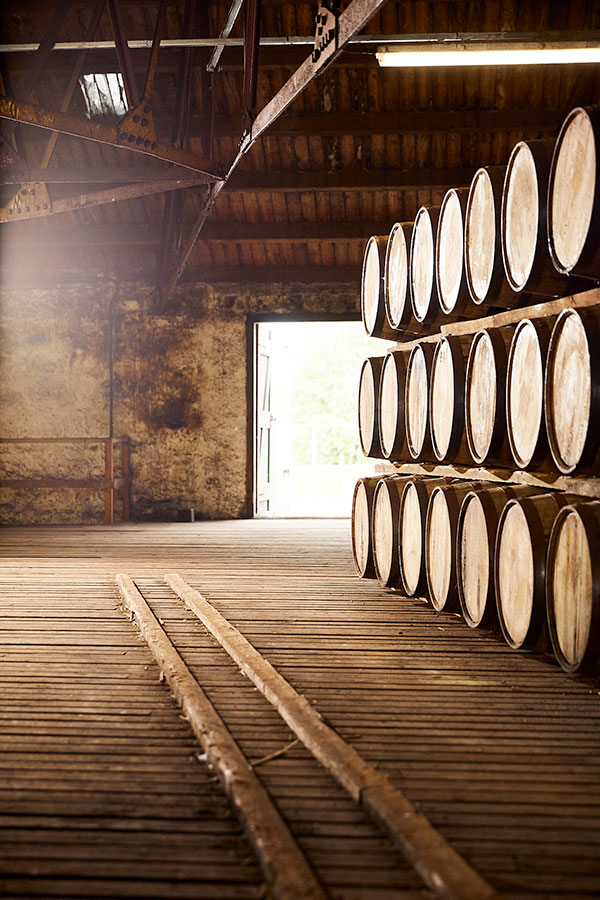The Scotch Whisky: Alchemy of Refinement

The dictionary definition of alchemy refers to the art of purifying the impure by imitating and accelerating the natural cycle, in order to perfect the substance or, to put it simply, to raise the imperfect to a state of perfection, or in our case, the Scotch Whisky.
While alchemy itself is still a pseudo-science, more akin to the fantasy of transmuting lead into gold, I believe this analogy serves as a perfect introduction to the process that turns simple ingredients such as water, malted barley and wood into Scotch whiskies of such distinctive palate that even the finest connoisseurs would fork out huge sums just to soak up their lips.
As with science, the Scotch whisky ageing has a long history, shaped by tradition, serendipity and, more recently, a relentless quest to perfection.
Traditionally, the Scotch whisky was more of a raw spirit, consumed immediately after production. By sheer happenstance, when transporting this spirit in wooden casks, distillers found that the latter would gain in complexity when aged. Indeed, it quickly became clear that the longer the liquid macerated in the barrels, the more ambrosial the colour, and the more mellow the taste, delivering new aromatic nuances.
The beginnings of Scotch Whisky aging

The aging process at The Dalmore
Photo: The Dalmore
It was the state of things that ushered in the intentional ageing of scotch. Scottish people of the time gradually recognized that wood, like barley and water, played an integral part in the production of high-grade spirit. Master distillers nowadays have an in-depth understanding of the different types of wood influencing the taste of the Scotch whiskies they craft.
For instance, an American oak barrel will bring notes of vanilla, caramel and coconut, while a European oak barrel will yield spicier notes with hints of dried fruit and nuts. Ongoing experiments range from the use of sherry and port barrels to rum, beer and even ice wine, all aimed at broadening the aromatic palette of our modern whiskies. Oak remains the sole constant, a highly porous wood that fosters an excellent synergy between the distillate and the natural oils of the wood itself.
Alongside the barrels, the climate is a key factor in this process. For illustration purposes, if the spirit is made in a hot, humid climate, the evaporation rate of the water is greater than that of the alcohol, and this can lead to a whisky of higher alcoholic strength. On the other hand, if the climate is cooler and drier, the alcohol tends to vaporize more rapidly, reducing the strength of the Scotch whisky.
The ageing process is also impacted by other factors: oxidation (which mellows aromas and flavours), tannins (which build astringency), lignins (which confer a vanilla-like character) and hemicelluloses (which impart sweet, caramelized notes).
Therefore, ageing means far more than the simple passing of time. Each drop of whisky is shaped, honed and enriched by a complex and subtle process. To every moment a new layer of sophistication is added, transmuting the clear distillate into a truly celebratory beverage of time, tradition and craftsmanship.
Age matters… or doesn’t it?
Yet, when it comes to the Scotch whisky, age is not always a guarantee of quality. As such, relying on your own taste and experimenting are essential to find out what suits your taste buds best.
To conclude, selected distilleries propose expressions that are particularly esteemed by connoisseurs. Among these are Glenfiddich with the Glenfiddich 21 year-old, the Reserva Rum Cask Finish and the Winter Storm Icewine Finish, Ardbeg with the Ardbeg Uigeadail and Ardbeg Corryvreckan for peaty enthusiasts, Highland Park with the Highland Park 18 and 25 year-old for smoke fiends, Macallan with the Macallan 18 Sherry Oak and Rare Cask, and Dalmore with the Dalmore King Alexander III and the Dalmore Constellation series for devotees seeking complexity and prestige.
Article originally published in the Gentologie Magazine issue 13. Subscribe now to Le Club.




